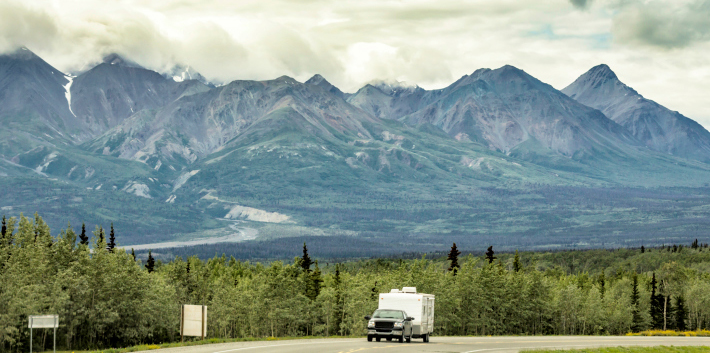Check out the following heating systems and determine which one is right for you. It may influence your next RV purchase.
Furnace or Hydronic
Today’s RVs come with either an RV furnace or a hydronic heating system. The furnace is basically a consolidated propane fired burner equipped with circulation and vent fans. It is controlled by an adjustable wall thermostat, just like home. When heat is called for, an electronic igniter lights the burner. When the heat chamber reaches a certain temperature the fan(s) are thermostatically started. The RV furnace is very reliable with limited maintenance requirements.
The hydronic heat system serves a dual purpose: interior heating and heating the hot water circuit. These multi-tasking units are diesel or propane fired. They also have the ability to operate on AC shore power. The electric element(s) and burner heat a closed circuit filled with boiler antifreeze. The heated antifreeze solution is then pumped to several air movers which are strategically installed in several locations within the living area. The air movers use small radiators with fans to transfer the heat as needed. The hot water circuit is heated via a heat exchanger configuration and is capable of supplying continuous hot water. While there are yearly maintenance requirements, this method of heating delivers the upmost of comfort providing consistent temperatures inside and uninterrupted hot water.
Both the RV furnace and the hydronic system are designed also to feed warm air into the basement. This feature protects the pipes, tanks and related plumbing from freezing, in many cases, even in extremely cold conditions.
AC Reverse Cycle Heat Pumps
In addition to having one of the fore mentioned RV heating systems, many units come with optional AC reverse cycle heat pumps. These are capable of also heating the entire living area. However, these only work when temperatures are at least several degrees above freezing. Below that temperature the heat pumps become inefficient. Most, if not all, so equipped RV’s are configured to change automatically from “Heat Pump” mode to “Furnace” or visa-versa should this temperature be reached. So it is possible to go to bed with the heat pumps operating, wake up to the furnace working, and observe the heat pumps once again restart as the morning warms up. Pretty tricky!
So, keep your heating system working well and enjoy the pleasures of off-season camping.
